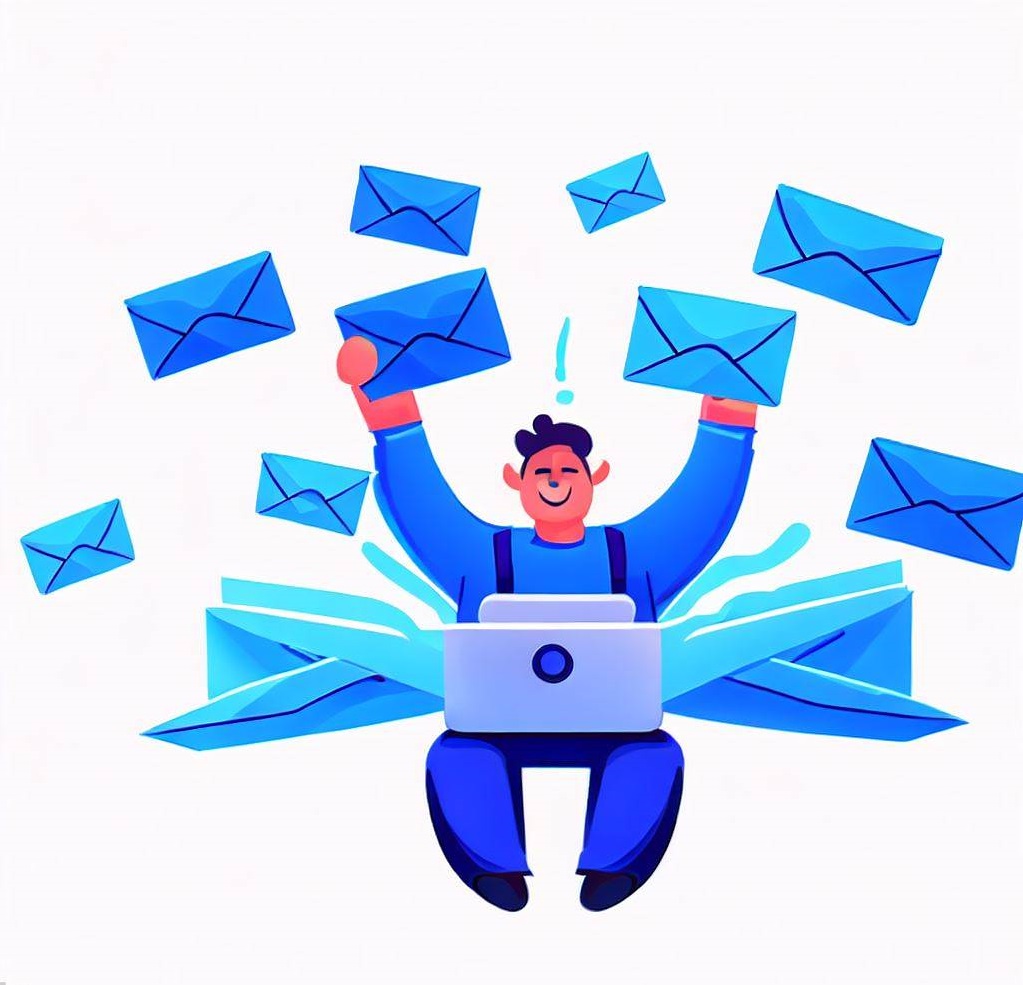Cold email campaigns are essential in modern marketing and outreach. They offer a direct route to connect with potential customers, partners, or clients, helping businesses expand their network and boost sales prospects. When done right, cold emails can create valuable connections and unlock new opportunities.
Yet, the success of these campaigns relies heavily on one key element: cold email deliverability. Email deliverability means ensuring your emails reach the recipient’s inbox instead of getting flagged as spam or bouncing back. This challenge arises from various factors, including sender reputation, email content quality, list maintenance, and more.
- Click here to preview verified prospect lists
Understanding Cold Email Deliverability
Cold email deliverability is the measure of an email’s ability to reach its intended recipient’s inbox without being marked as spam or bouncing back. It’s a vital metric for both email marketers and individuals who depend on email communication.
Maintaining high email deliverability ensures that your messages stand the best chance of being noticed and interacted with, which is ultimately key to the success of your email campaigns.
1. Factors Influencing Email Deliverability
- Sender Reputation: The sender’s email address and IP address play a pivotal role in determining email deliverability. A positive sender reputation results from high-quality sending practices, minimal bounce rates, and low complaint rates.
- Email Content and Formatting: Crafting engaging, relevant, and spam-free email content, including subject lines and body text, is vital. Proper formatting ensures your message appears correctly across different devices and email clients.
- List Quality and Segmentation: Maintaining a well-maintained and segmented email list is essential. Sending emails to engaged and interested recipients boosts deliverability while using outdated or purchased lists can harm it.
- Sending Frequency: The frequency of your email sends matters. Overloading recipients with too many emails in a short timeframe can trigger spam filters, while infrequent communication may result in emails being marked as irrelevant.
- Authentication and Security: Implementing email authentication protocols like SPF, DKIM, and DMARC verifies the legitimacy of your emails, thereby improving cold email deliverability. Additionally, ensuring the security of your email server prevents unauthorized access and misuse.”
Click here to preview verified prospect lists
2. The Function of ISPs and Email Filters
Internet Service Providers (ISPs) and email filters serve as guardians for incoming emails. They employ algorithms and criteria to decide whether an email should reach the recipient’s inbox, be marked as spam, or be denied entry altogether.
Comprehending the operations of ISPs and email filters, and aligning your email practices with their standards, is fundamental for maintaining reliable email deliverability.
To ensure top-notch deliverability for your cold email campaigns, there are a number of tactics you should consider following strictly. Read further below:
Building a Strong Sender Reputation for Better Email Deliverability
A positive sender reputation forms the cornerstone of email deliverability, ultimately deciding whether your emails end up in the recipient’s inbox or languish in the dreaded spam folder. Cultivating a robust sender reputation not only fosters trust with Internet Service Providers (ISPs) but also enhances the likelihood of your emails being read and acted upon.
Here are some essential steps to elevate your sender reputation:
1. Use a Dedicated IP Address
If you send a significant volume of emails, consider using a dedicated IP address. This isolates your sending reputation from the practices of other senders who share the same IP. It allows you to have better control over your sender’s reputation and ensures it isn’t adversely affected by unrelated senders’ activities.
2. Authenticate Your Domain with SPF, DKIM, and DMARC
Implement robust email authentication protocols such as Sender Policy Framework (SPF), DomainKeys Identified Mail (DKIM), and Domain-based Message Authentication, Reporting, and Conformance (DMARC). These protocols validate the legitimacy of your emails, mitigating the risks of spoofing and phishing attempts. A well-authenticated domain signals trustworthiness to ISPs.
3. Monitor Your Sender Score
Numerous tools and services provide sender score metrics, offering insight into your sender’s reputation. Regularly monitor your sender score to gauge the health of your email campaigns. A declining score may serve as an early warning sign, prompting you to address issues before they harm your sender’s reputation.
- Click here to preview verified prospect lists
4. Handle Bounces and Complaints Proactively
Act promptly when dealing with email bounces and recipient complaints. High bounce rates and an abundance of complaints can significantly harm your sender’s reputation. Routinely remove invalid email addresses from your list and provide clear, user-friendly unsubscribe options to minimize complaints.
5. Maintain a Consistent Sending History
ISPs closely scrutinize your sending history to assess your sender’s reputation. Consistency in sending volume and practices, coupled with a strong engagement history (e.g., high open rates, click-through rates), can gradually elevate your sender reputation over time. Avoid erratic email-sending patterns that might raise red flags with ISPs.
Crafting Effective Cold Emails
Creating effective cold emails by incorporating these strategies, you can create cold emails that are not only effective but also resonate with their recipients.
1. Compelling Subject Lines
The subject line serves as the initial impression and often dictates whether your email will be opened or ignored. Develop subject lines that are succinct, attention-grabbing, and relevant to the recipient’s interests or pain points.
- Click here to preview verified prospect lists
2. Personalization and Relevance
Personalization goes beyond merely addressing the recipient by name. Customize your cold emails to address the recipient’s specific needs, challenges, or interests. Demonstrate that you’ve conducted research and that your message is pertinent to them.
3. Avoiding Spam Content and Practices
Spam content can trigger spam filters and harm your sender’s reputation. Steer clear of excessive capitalization, an overabundance of exclamation marks, or misleading claims in your emails. Maintain transparency and honesty in your communication.
4. Proper Email Formatting and Mobile Friendliness
Ensure that your email is visually appealing and functions smoothly on both desktop and mobile devices. Employ a responsive email template, minimize the use of large images, and conduct thorough testing across various email clients to ensure proper rendering.
5. A/B Testing and Optimizing Email Content
A/B testing involves sending two variations of your email to a small subset of your list to determine which one performs better. This practice can help to refine your email content, subject lines, and call-to-action buttons, ultimately enhancing engagement rates over time.
- Click here to preview verified prospect lists

Building and Maintaining Quality Email Lists
The maintenance of a high-quality email list is paramount for achieving success in cold email marketing.
1. Importance of a Clean Email List
Maintaining a clean email list is the key to cold email deliverability and engagement. An overstuffed list filled with invalid or disinterested subscribers can compromise your sender’s reputation and squander valuable resources.
2. Building a Permission-Based Email List
Prioritize the development of a permission-based email list by procuring explicit consent from individuals who wish to receive your emails. You can acquire consent through sign-up forms on your website, social media platforms, or other lead-generation methods.
3. Regular List Maintenance and Segmentation
Conduct periodic reviews of your email list by purging inactive subscribers and organizing it based on criteria such as demographics, engagement history, and purchase behavior. Segmentation empowers you to dispatch more personalized and pertinent content.
4. Removing Inactive or Unengaged Subscribers
For subscribers who have displayed little or no interaction with your emails over an extended duration, contemplate launching re-engagement campaigns. In cases of continued unresponsiveness, it’s advisable to eliminate them from your list, thus enhancing overall engagement metrics and bolstering the sender reputation
- Click here to preview verified prospect lists
Managing Sending Frequency
Managing your email-sending frequency is essential for maintaining a successful email campaign that delivers valuable content while upholding your brand’s reputation and safeguarding your recipients’ data.
1. Finding the Right Sending Frequency
It is crucial to find the right balance when determining how often to send your email campaigns. This balance should ensure that your emails remain on your recipients’ radar without overwhelming them. The ideal frequency can vary depending on your target audience and the type of content you provide.
2. Avoiding Over-Sending and Spam
Sending too many emails at a high frequency can result in recipient annoyance and an increased unsubscribe rate. It may even trigger spam filters, harming your email deliverability. Always be mindful of your email frequency, ensuring that it aligns with the expectations of your recipients.
3. Establishing a Consistent Sending Schedule
Consistency in your email-sending schedule is vital for allowing recipients to anticipate your emails and building trust. Whether you choose a weekly, bi-weekly, or monthly schedule, stick to it to maintain engagement and predictability.
Monitoring Email Performance and Analytics
Tracking how your emails perform is essential for assessing the effectiveness of your email campaigns. It allows you to gain insights into how recipients are reacting, measure engagement, and make informed decisions to improve future campaigns.
1. Key Metrics to Monitor (Open Rates, Click-Through Rates, Bounce Rates, etc.)
- Open Rates: It shows how many recipients opened your email and helps you evaluate your subject lines and email content.
- Click-Through Rates (CTR): CTR measures the percentage of recipients who clicked on links within your email, providing insights into content relevance.
- Bounce Rates: These indicate the percentage of emails that couldn’t be delivered, which can impact your sender’s reputation and deliverability.
- Conversion Rates: These track the percentage of recipients who took a desired action after opening your email, like making a purchase or signing up for a webinar.
- Unsubscribe Rates: This reveals the percentage of recipients who opted out of your email list, helping you refine your content and targeting.
Click here to preview verified prospect lists
2. Tools and Software for Email Analytics
Many email marketing platforms and analytics tools are available to help you track and analyze email performance. Popular options include Google Analytics, MailChimp, HubSpot, and Adobe Analytics. These tools offer detailed insights into your email campaigns, making it easier to optimize your strategies.
Handling Bounces and Complaints
1. Understanding Types of Bounces
Bounces happen when an email you send doesn’t make it to the recipient’s inbox. It’s crucial to identify different types of bounces for proper handling. Here are the primary categories
- Soft Bounces: These usually result from temporary issues like a full inbox or a temporarily down server. Keep track of these addresses, as they might become deliverable later.
- Hard Bounces: These happen when emails can’t be delivered permanently due to reasons like invalid or non-existent email addresses. Promptly remove hard bounce addresses to maintain list hygiene.
2. Managing Complaints and Unsubscribes
Recipient complaints can harm your sender’s reputation and deliverability. Make sure to include a clear and easy-to-find unsubscribe link in your emails. Also, promptly address and resolve any complaints to prevent further issues.
Conclusion
Making sure your cold emails reach their destination is a complex task. It involves paying close attention to the details, following the right methods, and staying up-to-date with email trends.
- Click here to preview verified prospect lists
Keep in mind that cold email deliverability is a continuous process, and staying updated on industry trends and changes is essential to stay ahead in this ever-changing environment. These strategies will help you confidently handle the challenges of cold email campaigns and get the most out of your outreach.
